i THINK i've solved my own issue already, but i'm seeking a better understanding of why, or to be enlightened/set straight.
i have a list i call vec:
vec = [0.0, 0.0]
which changes values as data are read in.
in order to compare the current and previous values, i have another list which i call oldvec. if i define oldvec as
oldvec = vec
then it changes values every time vec changes values, so a comparison is useless -- they're always the same.
however, if i instead write
oldvec = [vv for vv in vec]
i don't have this problem -- oldvec keeps its values even as vec changes, so the comparison between current and previous vectors works as i need it to, i.e. it actually detects repeats and non-repeats! ... WHY?
